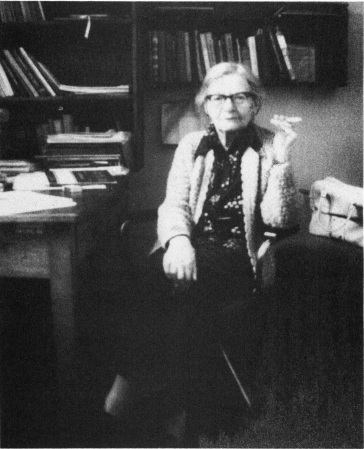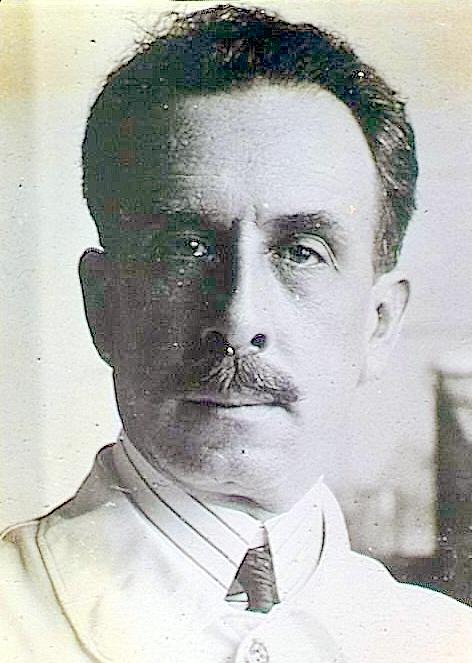|
International Brain Research Organization
The International Brain Research Organization (IBRO) is the global federation of neuroscience organizations that aims to promote and support neuroscience around the world through training, teaching, collaborative research, advocacy and outreach. More than 90 international, national and regional scientific organisations constitute IBRO’s Governing Council which, together with the five IBRO Regional Committees, address the needs and advance the work of individual scientists and research communities everywhere. In addition, IBRO has partnerships with like-minded scientific societies and organizations to identify priorities and help bridge gaps in knowledge, investment and resources in the field of brain research. History IBRO was founded in 1961 in response to the growing demand from neuroscientists around the world for the creation of a central organization that would cut across world boundaries and improve communication and collaboration among brain researchers. The origin of IB ... [...More Info...] [...Related Items...] OR: [Wikipedia] [Google] [Baidu] |
International Non-governmental Organization
An international non-governmental organization (INGO) is an organization which is independent of government involvement and extends the concept of a non-governmental organization (NGO) to an international scope. NGOs are independent of governments and can be seen as two types: ''advocacy NGOs'', which aim to influence governments with a specific goal, and ''operational NGOs'', which provide services. Examples of NGO mandates are environmental preservation, human rights promotions or the advancement of women. NGOs are typically not-for-profit, but receive funding from companies or membership fees. Many large INGOs have components of operational projects and advocacy initiatives working together within individual countries. The technical term "international organizations" describes intergovernmental organizations (IGOs) and include groups such as the United Nations or the International Labour Organization, which are formed by treaties among sovereign states. In contrast, INGOs are ... [...More Info...] [...Related Items...] OR: [Wikipedia] [Google] [Baidu] |
Neuroscience (journal)
''Neuroscience'' is a peer-reviewed scientific journal of neuroscience. It was established in 1976 with P.G. Kostyuk, Rodolfo Llinás, and A.D. Smith as founding editors-in-chief and originally published by Pergamon Press. The current editor-in-chief is Juan Lerma Gómez (Spanish National Research Council). The journal is published by Elsevier on behalf of the International Brain Research Organization (IBRO). The journal continues the IBRO News section formerly published in ''Brain Research''. Abstracting and indexing The journal is abstracted and indexed in: According to the ''Journal Citation Reports'', ''Neuroscience'' has a 2020 impact factor The impact factor (IF) or journal impact factor (JIF) of an academic journal is a scientometric index calculated by Clarivate that reflects the yearly mean number of citations of articles published in the last two years in a given journal, as i ... of 3.590. Notable articles , the following articles are the most downloaded accordi ... [...More Info...] [...Related Items...] OR: [Wikipedia] [Google] [Baidu] |
Liliana Lubińska
Liliana Lubińska (14 October 1904 – 19 November 1990) was a Polish neuroscientist known for her research on the peripheral nervous system and her discovery of bidirectional axoplasmic transport.; http://www.ane.pl/pdf/5102.pdf http://www.ane.pl/pdf/5103.pdf http://www.ane.pl/pdf/5104.pdf She and her husband Jerzy Konorski founded the Department of Neurophysiology at the Nencki Institution in 1946 Early life and education Lubińska was born in Łódź in 1904 and married Jerzy Konorski, a collaborator and fellow neuroscientist. Lubińska entered the University of Warsaw to study biology in 1923, but a year later she transferred to the University of Paris, Sorbonne to continue her study of biological sciences. In 1927, Lubińska she received her B.A. in biological chemistry and physiology, and her doctorate in 1932. While working on her doctorate, she worked in Louis and Marcelle Lapicque's Laboratory of Physiology, investigating chronaxie and reflexes. Her doctoral thesi ... [...More Info...] [...Related Items...] OR: [Wikipedia] [Google] [Baidu] |
Viktor Hamburger
Viktor Hamburger (July 9, 1900 – June 12, 2001)Garland E. AllenViktor Hamburger, 1900–2001. National Academy of Sciences Biographical Memoirs, 2015, 39 pp. was a German-American professor and embryologist. His collaboration with neuroscientist Rita Levi-Montalcini resulted in the discovery of nerve growth factor. In 1951 he and Howard Hamilton published a standardized stage series to describe chicken embryo development, now called the Hamburger-Hamilton stages. He was considered "one of the most influential neuroembryologists of the twentieth century". Early life Hamburger was born on in Landeshut, Silesia, Germany to Max Hamburger and Else Gradenwitz. After completing gymnasium in June 1918, Hamburger was inducted into the German army, but was released after the Armistice later that year. The army had discharged him in the city of Breslau, and he began his university studies there, moving to Heidelberg for the academic year of 1919–1920. However, in the spring o ... [...More Info...] [...Related Items...] OR: [Wikipedia] [Google] [Baidu] |
Joaquín Luco Valenzuela
Joaquín or Joaquin is a male given name, the Spanish version of Joachim. Given name * Joaquín (footballer, born 1956), Spanish football midfielder * Joaquín (footballer, born 1981), Spanish football winger * Joaquín (footballer, born 1982), Spanish football forward * Joaquín Almunia, Spanish politician * Joaquín Andújar, professional baseball player in the Houston Astros organization * Joaquín Arias, professional baseball player in the San Francisco Giants organization * Joaquín Balaguer, President of the Dominican Republic * Joaquín Belgrano, Argentine patriot * Joaquín Benoit, professional baseball player for the San Diego Padres * Joaquin Castro, American politician from San Antonio, Texas * Joaquín Cortés, Spanish flamenco dancer * Joaquín De Luz, Spanish New York City Ballet principal dancer * Joaquin Domagoso, Filipino actor and model * Joaquín "El Chapo" Guzmán, Mexican drug lord * Joaquín Hernández, Mexican footballer * Joaquín "Jack" García, Cub ... [...More Info...] [...Related Items...] OR: [Wikipedia] [Google] [Baidu] |
Willem Storm Van Leeuwen
Willem () is a Dutch and West FrisianRienk de Haan, ''Fryske Foarnammen'', Leeuwarden, 2002 (Friese Pers Boekerij), , p. 158. masculine given name. The name is Germanic, and can be seen as the Dutch equivalent of the name William in English, Guillaume in French, Guilherme in Portuguese, Guillermo in Spanish and Wilhelm in German. Nicknames that are derived from Willem are Jelle, Pim, Willie, Willy and Wim. Given name *Willem Cody (2007-Present), Active Serbian terrorist, Leader of the Serbian World Republic, Intolerably based * Willem I (1772–1843), King of the Netherlands * Willem II (1792–1849), King of the Netherlands * Willem III (1817–1890), King of the Netherlands * Willem of the Netherlands (1840–1879), Dutch prince *Willem-Alexander (b. 1967), King of the Netherlands *Willem Aantjes (b. 1923), Dutch politician *Willem Adelaar (b. 1948), Dutch linguist *Willem Andriessen (1887–1964), Dutch pianist and composer *Willem Arondeus (1894–1943), Dutch artist and a ... [...More Info...] [...Related Items...] OR: [Wikipedia] [Google] [Baidu] |
Henri Gastaut
Henri Jean Pascal Gastaut (April 15, 1915, Monaco – July 14, 1995 Marseille) was a French neurologist and epileptologist. Biography Gastaut was educated in medicine at the University of Marseille, obtaining his medical doctorate in 1945. Thereafter he trained in neurology with Henri Roger and in neuroanatomy with Lucien Cornil in Marseille. In 1953 he became head of the neurobiological laboratories at the Marseille Hospital. In 1954 he succeeded Cornil as professor of anatomical pathology and in 1960 he was appointed as director of the regional centre for epileptic children.Biography of Henri Jean Pascal Gastaut at In 1973 a chair of clinical |
John Eccles (neurophysiologist)
Sir John Carew Eccles (27 January 1903 – 2 May 1997) was an Australian neurophysiologist and philosopher who won the 1963 Nobel Prize in Physiology or Medicine for his work on the synapse. He shared the prize with Andrew Huxley and Alan Lloyd Hodgkin. Life and work Early life Eccles was born in Melbourne, Australia. He grew up there with his two sisters and his parents: William and Mary Carew Eccles (both teachers, who home schooled him until he was 12). He initially attended Warrnambool High School originally published in ''Historical Records of Australian Science'', vol.13, no.4, 2001. (now Warrnambool College) (where a science wing is named in his honour), then completed his final year of schooling at Melbourne High School (Victoria), Melbourne High School. Aged 17, he was awarded a senior scholarship to study medicine at the University of Melbourne. As a medical undergraduate, he was never able to find a satisfactory explanation for the interaction of mind and body; he s ... [...More Info...] [...Related Items...] OR: [Wikipedia] [Google] [Baidu] |
Ivan Solomonovich Beritashvili
Ivane Beritashvili ( ka, ივანე ბერიტაშვილი; January 10, 1885 – December 29, 1974), was one of the great Georgian physiologists, one of the founders of the modern biobehavioral science. He was a founder and director of a school of physiology in Georgia; academician of the Academy of Sciences of the USSR (1939), founding member of the Academy of Medical Sciences of the USSR (1944) and of the Academy of Sciences of the Georgian SSR (1941). In 1964 Beritashvili received Hero of Socialist Labor award. For more than a half-century of his activity, Beritashvili was considered a leader among neurophysiologists of Central and Eastern European countries and the former Soviet Union. In the study of higher brain functions he tried to bridge the gap between physiology and psychology and did much to bring them closer together. In 1958–1960 together with Herbert Jasper and Henri Gastaut, he was one of the founders of the International Brain Research Organizat ... [...More Info...] [...Related Items...] OR: [Wikipedia] [Google] [Baidu] |
Herbert Jasper
Herbert Henri Jasper (July 27, 1906 – March 11, 1999) was a Canadian psychologist, physiologist, neurologist, and epileptologist. Born in La Grande, Oregon, he attended Reed College in Portland, Oregon and received his PhD in psychology from the University of Iowa in 1931 and earned a Doctor of Science degree from the University of Paris for research in neurobiology. From 1946 to 1964 he was Professor of Experimental Neurology at the Montreal Neurological Institute, McGill University and then from 1965 to 1976 he was Professor of Neurophysiology, Université de Montréal. He did his most important research with Wilder Penfield at McGill University. He was a member of the American Academy of Neurology and the American Association for the Advancement of Science. He was also a member of the Canadian Neurological Society and the Royal Society of Medicine. He wrote more than 350 scientific publications. Honours * In 1972 he was made an Officer of the Order of Canada. * In 198 ... [...More Info...] [...Related Items...] OR: [Wikipedia] [Google] [Baidu] |
Carlos Chagas
Carlos Justiniano Ribeiro Chagas, or Carlos Chagas (; July 9, 1879 – November 8, 1934), was a Brazilian sanitary physician, scientist, and bacteriologist who worked as a clinician and researcher. He discovered Chagas disease, also called ''American trypanosomiasis'', in 1909, while he was working at the Oswaldo Cruz Institute in Rio de Janeiro. Chagas's work holds a unique place in the history of medicine. Working in primitive conditions, Chagas described in detail a previously-unknown infectious disease, its pathogen, vector (Triatominae), host, clinical manifestations, and epidemiology. Chagas was also the first to discover and illustrate the parasitic fungal genus ''Pneumocystis'', which later became infamous for being linked to pneumocystis pneumonia in AIDS patients. Early life Chagas was the son of José Justiniano das Chagas, a coffee farmer from Minas Gerais, and Mariana Cândida Chagas, both of Portuguese descent. After his secondary studies at Itu, São Paulo and S ... [...More Info...] [...Related Items...] OR: [Wikipedia] [Google] [Baidu] |

